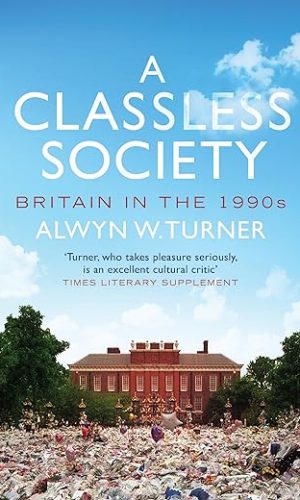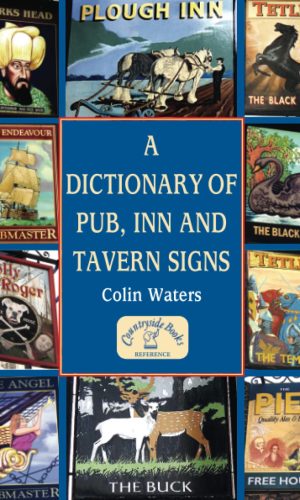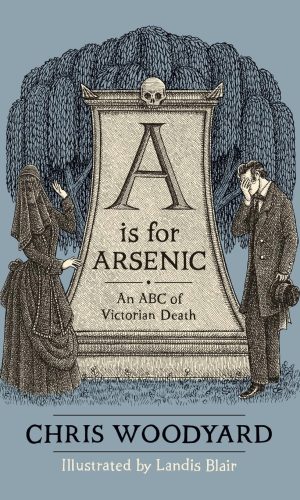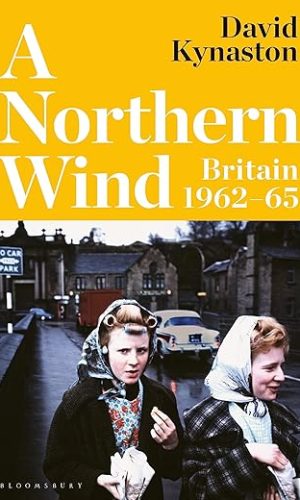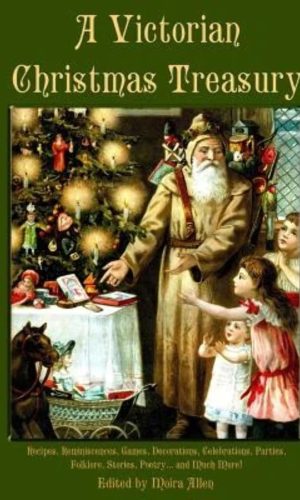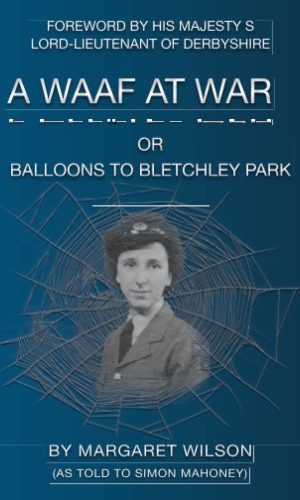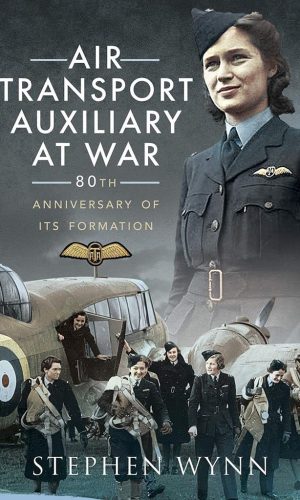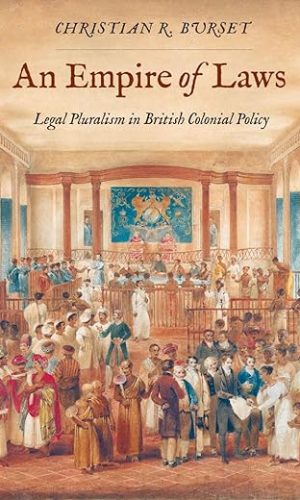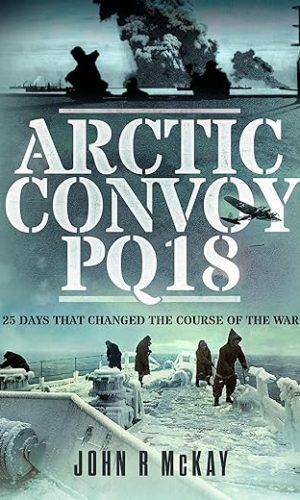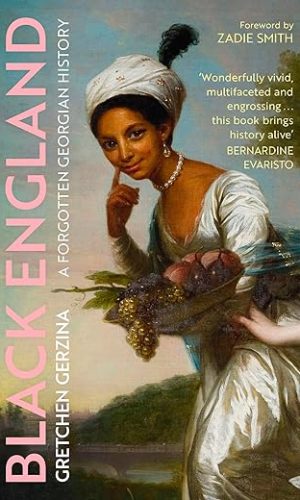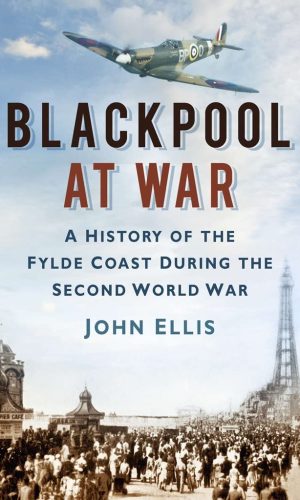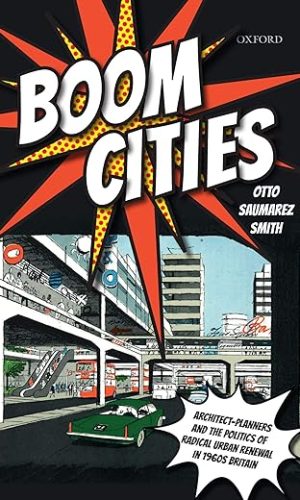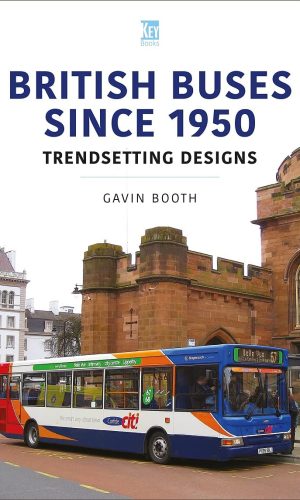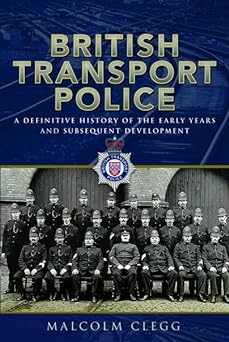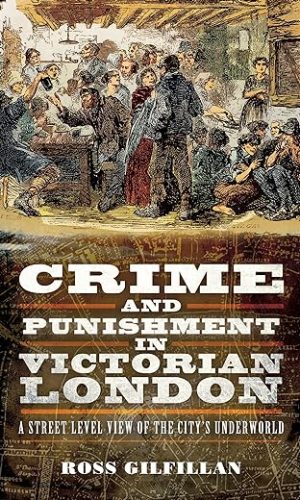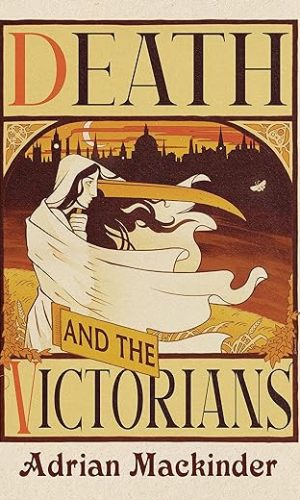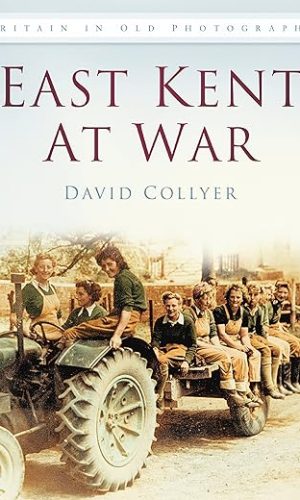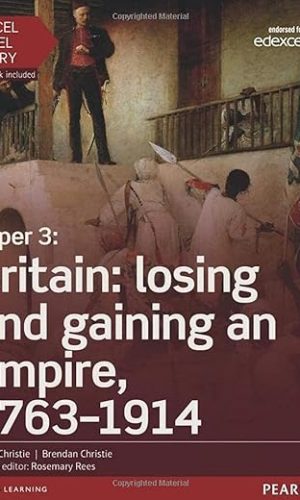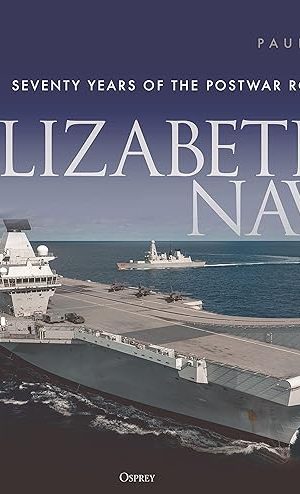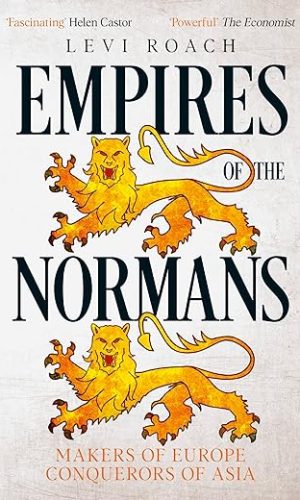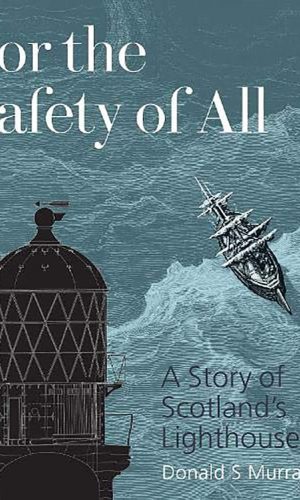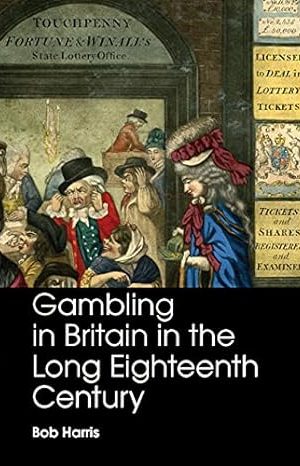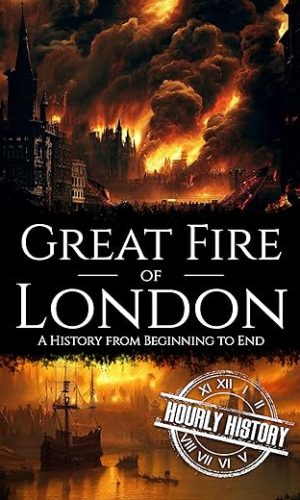Great Britain
-
A Classless Society: Britain in the 1990s
“Superb” NICK COHEN, author of What’s Left?
“Tremendously entertaining” DOMINIC SANDBROOK, Sunday Times
“Like his previous histories of the Seventies and Eighties, A Classless Society is an extraordinarily comprehensive work. Turner writes brilliantly, creating a compelling narrative of the decade, weaving contrasting elements together with a natural storyteller’s aplomb… engaging and unique” IRVINE WELSH, Daily Telegraph
“Ravenously inquisitive, darkly comical and coolly undeceived… Turner is a master of the telling detail” CRAIG BROWN, Mail on Sunday
When Margaret Thatcher was ousted from Downing Street in November 1990 after eleven years of bitter social and economic conflict, many hoped that the decade to come would be more ‘caring’; others hoped that the more radical policies of her revolution might even be overturned. Across politics and culture there was an apparent yearning for something the Iron Lady had famously dismissed: society.
The ‘New Britain’ to emerge would be a contradiction: economically unequal but culturally classless. Whilst Westminster agonised over sleaze and the ERM, the country outside became the playground of the Ladette. It was also a period that would see old moral certainties swept aside, and once venerable institutions descend into farce – followed, in the case of the Royal Family, by tragedy.
Opening with a war in the Gulf and ending with the attacks of 11 September 2001, A Classless Society goes in search of the decade when modern Britain came of age. What it finds is a nation anxiously grappling with new technologies, tentatively embracing new lifestyles, and, above all, forging a new sense of what it means to be British.
“Deserves to become a classic” EDWINA CURRIE
“Rich and encyclopaedic” ROGER LEWIS, Daily Mail
“Excellent” D.J. TAYLOR, Independent
Read more
£2.20 -
A Dictionary of Pub, Inn and Tavern Signs: An A-Z Reference Guide to Pub Names – Their meaning, origin and history
There are few things that symbolise British culture better than the good old-fashioned pub. Over centuries, their colourful hanging signs have become an integral part of the country’s backdrop. But how much do you really know about the names of these pubs, and how they came to have them?
Have you ever found yourself at the Red Lion, the Swan with Two Necks, the Jolly Roger, the Golden Fleece or the Beetle & Wedge, and stopped to wonder how it came by its name? Or what that name might reveal about the history of the building?
The answers to all these questions, and hundreds more, are contained with A Dictionary of Pub, Inn and Tavern Signs.
Here you’ll find out how public drinking houses have changed through history, progressing from the simple custom of hanging grapes outside to boards depicting a name and illustration; how, after the Norman Conquest, some inn-keepers found themselves obliged to display elements of their new lord’s coat of arms – a lion, griffin, deer or hart; how some pubs’ names (the Plough & Harrow or the Three Horseshoes, for example), came to represent the livelihoods of many of the inn’s customers.
This illustrated reference book, arranged alphabetically, provides a brief guide to the meaning, origin and history of these names and sheds light on an important part of Britain’s heritage.
Colin Waters is also the author of A Dictionary of Old Trades, Titles and Occupations and A Dictionary of Saints’ Days, Fasts, Feasts & Festivals.
Read more
£10.40 -
A is for Arsenic: An ABC of Victorian Death
Written by Chris Woodyard, the author of The Victorian Book of the Dead, A is for Arsenic is a guide to the the basics of Victorian mourning and death all illustrated by the incomparable Landis Blair. Each entry includes a pen and ink illustration along with 19th century anecdotes ranging from macabre stories to jokes from the Victorian press. (Plus sinister little poems in homage to Edward Gorey.)
“A is For Arsenic” covers topics including post-mortem photography, embalming, bodysnatching tips, what to wear when in mourning, and how long to mourn for someone who has left you money in their will. The book also debunks several Victorian mourning myths.
There are 26 alphabetical entries-from Arsenic to Zinc, (see below) along with an informative glossary, appendix, and detailed bibliography. Here are the topics: A – Arsenic; B – Bier; C – Crape; D – Death Token; E – Embalming; F – Fisk Burial Case; G – Gates Ajar; H – Hearse; I – Ice Box; J – Jet; K – Keen; L – Lychgate; M – Mute; N – Necropolis; O – Obelisk; P – Post Mortem; Q – Queen Victoria; R – Resurrection Men; S – Shroud; T – Tear Bottle; U – Undertaker; V – Veil; X – Sexton; W – Weepers; Y – Churchyard; Z – Zinc
Appendix: Mourning Etiquette
Glossary
Bibliography
Chris Woodyard, author of The Victorian Book of the Dead, answers your dead-serious questions including:
How long should you mourn for someone who left you money in their will?
Why did body snatchers strip a body beforecarrying it away?
What was a coffin torpedo?
Were mourning clothes poisonous?
What is inheritance powder?
Who killed off keening?
What is dead water?
An A to Z delight for lovers of the macabre!
Read more
£13.50£16.20A is for Arsenic: An ABC of Victorian Death
£13.50£16.20 -
A Northern Wind: Britain 1962-65
WATERSTONES’ BEST BOOKS OF THE YEAR: HISTORY
A SPECTATOR BOOK OF THE YEAR
The early sixties in Britain told as only David Kynaston (‘the most entertaining historian alive’ Spectator) can. Running from 1962 to 1965, A Northern Wind is the anticipated new volume in the landmark ‘Tales of a New Jerusalem’ series.‘Addictively readable . . . Kynaston’s tireless research turns up plenty of gems’ Dominic Sandbrook, Sunday Times
‘A breathtaking array of treasures’ TLS
‘Magisterial’ Financial Times
‘Here is an intricate tapestry that conveys the essence of time’ Literary ReviewHow much can change in less than two and a half years? In the case of Britain in the Sixties, the answer is: almost everything. From the seismic coming of the Beatles to a sex scandal that rocked the Tory government to the arrival at No 10 of Harold Wilson, a prime minister utterly different from his Old Etonian predecessors.
A Northern Wind, the keenly anticipated next instalment of David Kynaston’s acclaimed Tales of a New Jerusalem series, brings to vivid life the period between October 1962 and February 1965. Drawing upon an unparalleled array of diaries, newspapers and first-hand recollections, Kynaston’s masterful storytelling refreshes familiar events – the Cuban Missile Crisis, the Big Freeze, the assassination of JFK, the funeral of Winston Churchill – while revealing in all their variety the experiences of the people living through this history.
Major themes complement the compelling narrative: an anti-Establishment mood epitomised by the BBC’s controversial That Was The Week That Was; a welfare state only slowly becoming more responsive to the individual needs of its users; and the rise of consumer culture, as Habitat arrived and shopping centres like Birmingham’s Bull Ring proliferated. Multi-voiced, multi-dimensional and immersive, Tales of a New Jerusalem has transformed how we see and understand post-war Britain. A Northern Wind continues the journey.
Read more
£8.70 -
A Short History of England: Simon Jenkins
From the invaders of the dark ages to the aftermath of the coalition, one of Britain’s most respected journalists, Simon Jenkins, weaves together a strong narrative with all the most important and interesting dates in a book that characteristically is as stylish as it is authoritative.
A Short History of England sheds light on all the key individuals and events, bringing them together in an enlightening and engaging account of the country’s birth, rise to global prominence and then partial eclipse.There have been long synoptic histories of England but until now there has been no standard short work covering all significant events, themes and individuals.
Now updated to take in the rapid progress of recent events and beautifully illustrated, this magisterial history will be the standard work for years to come.
Read more
£4.70£9.50A Short History of England: Simon Jenkins
£4.70£9.50 -
A Victorian Christmas Treasury
What do you love most about Christmas? Is it the trees? The lights? The glittering baubles? The cards? The carols? Do you love revisiting the story of Scrooge, or delight in playing “Santa” for your little ones? Chances are, your favorite Christmas traditions have their roots in the Victorian period! Wouldn’t it be wonderful if you could travel back in time and experience an authentic Victorian Christmas? This book is your ticket to exactly that. It gives you a unique opportunity to experience Christmas, Victorian style. It offers rare glimpses into the Victorian home, revealing how Christmas was celebrated in houses great and small. You’ll discover authentic Victorian recipes, decorating ideas, and gift suggestions. Discover Victorian Christmas carols, and find out how some of your favorite Victorian traditions came about. Explore Christmas history and folklore, and see how Christmas was celebrated in other lands during the 19th century as well! This volume brings together dozens of never-before-anthologized articles from a host of Victorian magazines, ranging from the 1840’s to the turn of the century. It’s your ticket to the past — and an opportunity to create your own Victorian-style traditions for years to come!Read more
£11.50 -
A Victorian Workhouse – The Lives Of The Paupers: Mildenhall Suffolk (History of Mildenhall, Suffolk)
“It is obvious that Danny Pearson, author, has thoroughly researched the history of Mildenhall Workhouse, and has succeeded in writing a book that shines a light on part of Suffolk’s hidden past.
But, instead of being a tedious diary of chronological events, Danny has managed to bring history alive by looking into the lives of certain inmates, and how they did, or did not survive. Sometimes the writing is gory . . . But It’s real! This book is a highly readable account and an intriguing but sometimes gruesome chronicle of life during Victorian times in Suffolk.”Charlie Haylock, Voice Dialect Coach on “The Dig
“Pearson’s account of the lives of Mildenhall Workhouse residents has a well-structured narrative and conversational tone. Not just a chronicle of people and events, Pearson also injects a modern perspective and sense of humour into these stories. As a result, A Victorian Workhouse indirectly asks readers to consider how we can care for people today by laying bare the humanity of those who suffered through poverty in the Victoria era. This is an excellent and well-researched book for both casual readers and lovers of Victorian history.”
Devon Driver
100 Years on since the demolition of the grand Victorian mansion that was the Mildenhall Union Workhouse, this book tells the story of the “Paupers” unfortunate enough to have found themselves confined within it’s walls. The book takes you on a time travelling experience to meet former residents of this market town in rural Suffolk. Discovering grave robbery, disease, suicide, violence and misunderstood mental illness along the way. Discover their story.
Many individuals heartbreakingly fell into the poverty trap, created by the new poor law of 1834, desperate individuals who would never live outside the workhouse again. Any “Paupers” unfortunate enough to die within the workhouse, could find themselves sold to Cambridge University, their bodies used to train Medical students. Even in death the Paupers were owned by the workhouse. Read their story.
However there were inmates who walked proudly away from the institution and these stories can also be found in this book too. Such as the young Mildenhall lad, who had just a few years earlier walked the streets with his mum and sisters, dressed in rags without any food, toes poking out of his worn down shoes. This family tramped the streets looking for shelter on a freezing cold November evening. The same young man a decade later created a new life for himself, literally chasing away the Workhouse shadows in Sunny California, a real life Suffolk cowboy! Read his story.
Who ran the workhouse? Who were the Master and Matron of the Mildenhall Union? Who and what were the Board of Guardians? As well as the stories of the poor, this book reveals the lives of those tasked with caring for the poor. You will discover that the Master has some skeletons in his closet! Discover his story.
If you were to take a short stroll through Mildenhall you would soon discover many of the street names and buildings named after former wealthy residents. Names such as Hanmer, Bunbury, North, Aldrich, famous names not just in Mildenhall but throughout Britain. The poor walked the very same streets as theses famous families, leaving behind little evidence that they were ever here. These lives now carefully pieced back together through years of research using historical records and newspaper archives.
The poor were here too, read their story
Read more
£1.90 -
A WAAF AT WAR: OR BALLOONS TO BLETCHLEY PARK
This is Margaret’s story, an ordinary young woman from the shires who voluntarily joined the war against Germany and the Nazi Party.
It is a story that takes us from a small rural coal mining town to the sheer hard graft of handling highly hazardous barrage balloons, a sojourn at an operational bomber base.
From there we are taken into the almost monastic world of signals intelligence collection at Bletchley Park. Not for her the interminable copying of sacred texts, rather the transcribing of enemy signal traffic.
To this day Margaret will not talk about her work at Bletchley Park in any detail. This has caused frustration amongst historians, including Bletchley Park itself.
Winston Churchill described the young women at Bletchley as ‘the geese that laid the golden eggs and never cackled.’
And so it has proved.
Read more
£7.10 -
Air Transport Auxiliary at War: 80th Anniversary of its Formation
This book looks at the invaluable work carried out by members of the Air Transport Auxiliary during the course of the Second World War. Comprised of both men and women, it was a civilian organisation tasked with the collection and delivery of military aircraft from the factories to the RAF and Royal Navy stations. Men who undertook the role had to be exempt from having to undertake war time military service due to health or age, but other than that there were very few restrictions on who who could join, which accounted for one-legged, one-armed, one-eyed and short sighted pilots being accepted. Initially it was only men who were allowed to carry out this service, but by December 1939, British authorities were persuaded by Pauline Gower (the daughter of Sir Robert Vaughan Gower, a wartime Conservative MP, and an accomplished pilot in her own right), to establish a women’s section of the Air Transport Auxiliary, of which she was put in charge. The first eight women were accepted in to the service, but it would not be until 1943 that its male and female members received the same pay. By the end of the war 147 different types of aircraft had been flown by the men and women of the Air Transport Auxiliary, including Spitfire fighter aircraft and Lancaster bombers. These brave pilots were not just British, but came from 28 Commonwealth and neutral countries and their efforts sometimes came at a price: 174 Air Transport Auxiliary pilots, both men and women, died during the war whilst flying for the service.Read more
£11.60£14.20 -
An Empire of Laws: Legal Pluralism in British Colonial Policy (Yale Law Library Series in Legal History and Reference)
A compelling reexamination of how Britain used law to shape its empire
For many years, Britain tried to impose its own laws on the peoples it conquered, and English common law usually followed the Union Jack. But the common law became less common after Britain emerged from the Seven Years’ War (1754–63) as the world’s most powerful empire. At that point, imperial policymakers adopted a strategy of legal pluralism: some colonies remained under English law, while others, including parts of India and former French territories in North America, retained much of their previous legal regimes.
As legal historian Christian R. Burset argues, determining how much English law a colony received depended on what kind of colony Britain wanted to create. Policymakers thought English law could turn any territory into an anglicized, commercial colony; legal pluralism, in contrast, would ensure a colony’s economic and political subordination. Britain’s turn to legal pluralism thus reflected the victory of a new vision of empire―authoritarian, extractive, and tolerant―over more assimilationist and egalitarian alternatives. Among other implications, this helps explain American colonists’ reverence for the common law: it expressed and preserved their equal status in the empire. This book, the first empire-wide overview of law as an instrument of policy in the eighteenth-century British Empire, offers an imaginative rethinking of the relationship between tolerance and empire.Read more
£52.30 -
An Historical Map of Cambridge: University and County Town (Town & City Historical Maps)
A full colour map, based on a digitised OS map of Cambridge published in 1927, with its medieval, Georgian, Victorian and Edwardian past overlain and important buildings picked out. Cambridge is one of England’s two ancient university towns. It was an important trading centre for the Romans and then the Anglo-Saxons. The town was the location for a castle built on rising ground above the flood plain of the River Cam, by William I in about 1068. In about 1209 the first students of what was to become the University arrived from Oxford, and the first college (Peterhouse) was founded in 1284. The city (it became a city only in 1951) is home to some of the best-known and most familiar university buildings in the country including King’s College Chapel, the University Church and the Senate House, Trinity College’s Wren Library and the Victorian chapel of St John’s College. From the 16th century, many of the colleges created extensive grounds along both sides of the river, resulting in the famous Cambridge ‘Backs’ of today. But the town was also the county town of Cambridgeshire with a Shire Hall, and it developed its own identity and status as a town through various charters, with a guildhall to serve its local government. It transformed from a service economy supporting the university, with a substantial publishing presence, when, in the 19th century, it developed an industrial base (milling, malting, brewing, iron-founding, brick-making and cement manufacture); it also became a major railway centre. As a result, its suburbs expanded, especially to the east of the town centre. The historical map shows the sites of the town’s major buildings, both existing in 1927 and lost by then, its vanished medieval buildings, the site of the castle and shire hall. The map’s cover has a short introduction to the town’s history, and on the reverse an illustrated and comprehensive gazetteer of Cambridge’s main sites of historical interest.Read more
£8.90 -
Anglo-Saxon Kings and Warlords AD 400–1070: 253 (Elite)
Richly illustrated, this title describes Anglo-Saxon monarchs, warlords and their warriors and households in Anglo-Saxon Britain, from the first post-Roman mercenaries to the Norman Conquest.In a country fragmented by Roman withdrawal during the 5th century AD, the employment of Germanic mercenaries by local rulers in Anglo-Saxon Britain was commonplace. These mercenaries became settlers, forcing Romano-British communities into Wales and the West Country. Against a background of spreading Christianity, the struggles of rival British and Anglo-Saxon kingdoms were exploited by the Vikings, but eventually contained by the Anglo-Saxon king, Alfred of Wessex. His descendants unified the country during the 10th century, however, subsequent weak rule saw its 25-year incorporation into a Danish empire before it finally fell to the Norman invasion of 1066.
Scholars of the early Church have long known that the term ‘Dark Ages’ for the 5th to 11th centuries in Britain refers only to a lack of written sources, and gives a false impression of material culture. The Anglo-Saxon warrior elite were equipped with magnificent armour, influenced by the cultures of the late Romans, the Scandinavian Vendel people, the Frankish Merovingians, Carolingians and Ottonians, and also the Vikings.
In this volume, co-authors Raffaele D’Amato and Stephen Pollington access their extended knowledge to paint a vivid picture of the kings and warlords of the time with the aid of colour illustrations, rare photos and the latest archaeological research.
Read more
£10.40£14.20 -
Arctic Convoy PQ18: 25 Days That Changed the Course of the War
This superbly researched book tells the story of one of the most significant maritime operations of the Second World War. The importance of the Arctic convoys providing the Soviets with the necessary equipment needed to win the war on the Eastern Front has too often been underestimated. This book puts that right. Following PQ17, the worst Allied maritime disaster of the Second World War, it was imperative that PQ18 got through. So when the convoy left Loch Ewe on 2 September 1942 the stakes could not have been higher. The Battle of Stalingrad was hanging in the balance. Had the convoy suffered unacceptable shipping and war supply losses, the Arctic route would have had to be suspended with potentially war-changing consequences not just for the Soviets but the whole Allied war effort. Consequently, as this work vividly describes, it was both the most heavily defended and the most heavily attacked convoy of the whole war. The Author draws on contemporaneous accounts of the combatants from both sides including U-boat crews, airmen and, of course, the crews of the warships and merchantmen. Offering newly discovered facts about the convoy’s turbulent passage, this book is a valuable addition to the history of the campaign which will appeal to historians and laymen alike.Read more
£16.70£20.90 -
Bad Taste: Or the Politics of Ugliness
A timely critique of consumer culture which captures this image-obsessed moment in history, perfect for fans of Zadie Smith’s Feel Free and Jia Tolentino’s Trick Mirror.
This book is not a taste, nor an anti-taste, manual.
This is an interrogation of the importance we place on seemingly objective ideas of taste in a culture that is saturated by imagery, and the dangerous impact this has on our identities, communities and politics. This book is dedicated to understanding the industries of taste. From the food we eat to the way we spend our free time, Olah exposes the shallow waters of ‘good’ and ‘bad’ taste and the rigid hierarchies that uphold this age-old dichotomy.
How did minimalism become a virtue, and who can afford to do it justice?
When did blue-collar jackets become a fashion item?
Who stands to gain from the distinction made between beauty, and sex?
Bold, original and provocative, Bad Taste is a revelatory exploration of the intersection between consumerism, class, desire and power, and a rousing call-to-arms to break free from the restrictive ways we see those around us.
‘Nathalie Olah is one of the sharpest social critics of the post-crash era and Bad Taste doesn’t disappoint.’ Sarah Jaffe
Read more
£15.20£18.00Bad Taste: Or the Politics of Ugliness
£15.20£18.00 -
Behind the Thistle: Playing Rugby for Scotland (Behind the Jersey Series)
Featuring the thoughts of more than 180 players who have represented Scotland since the very first Test match in 1871 all the way through to the present day, Behind the Thistle gives a unique insight into the drama and emotion of playing for Scotland in that most rarefied of environments – Test match rugby.
In this exhaustively research tome, David Barnes and Peter Burns provide inside access to more than 150 years of private moments in the changing room, on tour, on the training ground, during the tumultuous heat of battle itself, and lift the lid on numerous post-match antics.
This is the story of what it is really like to play for Scotland, revealing the sacrifices and joys experienced by those who have shed blood, sweat and tears in pursuit of glory in the navy blue jersey.
Read more
£11.90£12.30 -
Black England: A Forgotten Georgian History
‘The classic book on Black people in Georgian London’ DAVID OLUSOGA
‘Deeply researched, lucidly written and utterly fascinating . . . If you ever thought Black British history started with Windrush, read this book’ GREG JENNER
Georgian England had a large and distinctive Black community. There were special churches, Black-only balls, many became famous and respected. But all, whether prosperous citizens or newly freed slaves, lived under the constant threat of kidnap and sale to plantations. Black England tells their stories, bringing their triumphs and tortures to vivid life, revealing a dramatic forgotten chapter of our shared past.
‘Black England taught me more history than I ever learned at school. Gretchen Gerzina tells it as it was, so we know how it is . . . a book that will be relevant for ever’ BENJAMIN ZEPHANIAH
Read more
£0.90 -
Blackpool at War: A History of the Fylde Coast During the Second World War
Although it escaped bombing raids, Blackpool played an important role in World War Ii as a center for training, with numerous airfields and factories surrounding the area. This book is the first to offer a dedicated history of the town during this period. It includes interesting stories such as the people’s playground, the Freckleton Air Disaster, and an eventbyevent account of activities. Despite being less affected than some other areas, the difficult war years still impacted the local people. Filled with true tales of local courage and of the spirit of the people of Blackpool during these tumultuous years, this nostalgic volume will be of interest to all who know and love Blackpool.Read more
£9.70£14.20 -
Boom Cities: Architect Planners and the Politics of Radical Urban Renewal in 1960s Britain
Boom Cities is the first published history of the profound transformations of British city centres in the 1960s.It has often been said that urban planners did more damage to Britain’s cities than even the Luftwaffe had managed, and this study details the rise and fall of modernist urban planning, revealing its origins and the dissolution of the cross-party consensus, before the ideological smearing that has ever since characterized the high-rise towers, dizzying ring roads, and concrete precincts that were left behind.
The rebuilding of British city centres during the 1960s drastically affected the built form of urban Britain, including places ranging from traditional cathedral cities through to the decaying towns of the industrial revolution. Boom Cities uncovers both the planning philosophy, and the political, cultural, and legislative background that created the conditions for these processes to occur across the country.
Boom Cities reveals the role of architect-planners in these transformations. The volume also provides an unconventional account of the end of modernist approaches to the built environment, showing it from the perspective of planning and policy elites, rather than through the emergence of public opposition to planning.
Read more
£22.60 -
Britain’s Most Eccentric Sports
Britain is a nation of good sports – literally, it turns out, given our country’s wonderful array of eccentric and bizarrely inventive pastimes. Yes, we know New Zealand are good at rugby, Brazil at football, while Australia and South Africa were countries specifically created for people who take sport far too seriously, but have those sporty nations ever produced a World Champion Pie Eater (OK, Shane Warne notwithstanding)? Has Brazil provided a F1 Pram Racing world champ? Has an Aussie won the World Nettle Eating Championship? A New Zealander tossed his way to Haggis Hurling domination? I can’t hear you Johnny Foreigner, and I’m choosing to interpret your silence as a ‘no’. Because the truth is, ladies and gentlemen of this great, mighty and resilient sporting land we call both Britain and home, we have provided year after year, true world champions in cheese rolling, competitive ploughing, medieval football re-enactment and pram racing. We may not have produced a Wimbledon Champion since the… er… the Wars of the Roses, but put down your Jules Rimet trophy Brazil, hand back your Rugby World Cup South Africa, and pick up your flonking stick – it’s time to learn about the sports that really matter.
Read more
£3.40 -
British Buses Since 1950: Trendsetting Designs (Britain’s Buses Series)
Bus design has certainly evolved in the seven decades since 1950, but it has not been a steady process. Advances in bus design have caused manufacturers to rush back to the drawing board for fear of being left behind. In 1950, the first of the new breed of underfloor-engined single-deckers appeared, and, just six years later, came the first rear-engined double-decker. Buses got longer, and one result in the 1960s was a rash of new rear-engined single-deck models. Efforts to make buses accessible for all passengers led to low-floor models in the 1990s, and then, in the 2000s, concerns about the environment prompted diesel-electric hybrid, gas, electric and hydrogen buses. Covering the designs that led the way with varying degrees of success over the past 70 years, and illustrated with over 170 colour images and period advertisements, this book showcases the good, the bad and the ugly of British bus design.Read more
£6.20 -
British Independent Buses in the 2000s
Roaring through the millennium into the twenty-first century we find the Transport Act 2000 that allows for increased cooperation between local authorities and operators, something that had not been allowed previously under competition legislation. Increasingly through the 2000s local authorities and county councils are taking responsibility for funding local bus services. The vehicles in use are changing as more and more operators invest in accessible buses. By the beginning of 2008, towards the end of the period covered by this book, 58 per cent of the UK bus fleet is low-floor. Again, we see the demise of some well-known operators, the takeover of some by the big bus groups, and, on the plus side, the rise in importance of others. Illustrated with previously unpublished images, this volume portrays the vehicles in use with independent companies through the first decade of the twenty-first century.Read more
£11.20£14.20British Independent Buses in the 2000s
£11.20£14.20 -
British Transport Police: A definitive history of the early years and subsequent development
This book traces the history of the British Transport Police, the National Police Force responsible for policing the railways of England, Scotland and Wales. The roots of the Force go back almost 200 years, starting with the development of the railways during the Nineteenth Century. Hundreds of railway companies were founded and although mergers and amalgamations took place, by the end of the century, well over 100 railway companies were operating, most of which employed railway policemen. The first railway policemen were recruited to work on the Stockton and Darlington Railway in 1826. Other railway companies quickly followed and by the 1850s, railway policemen with their smart uniforms and top hats were a common sight on Britain’s railways. During the Twentieth Century, railway companies continued to merge before being nationalised in 1948. The following year, the British Transport Commission (BTC) was created to oversee not only the newly nationalised railway network, but also the nation’s docks, shipping, inland waterways, road transport, road haulage and other companies. Also in 1949, the British Transport Commission Police (BTC Police) was created to take over the policing of these newly nationalised institutions. All the former railway, dock and canal police forces were then absorbed into the new BTC Police Force. The BTC was abolished in 1962, having incurred serious financial losses. The BTC Police was renamed the British Transport Police in 1963 and has continued to operate ever since. It no longer polices the docks, harbours and canals for reasons outlined in this book.Read more
£20.00£23.80 -
Buses in South and West Yorkshire
The Metropolitan counties of South and West Yorkshire have some of the most intensive bus operations outside Birmingham and London. The former metropolitan counties include considerable amounts of rural terrain alongside densely populated urban areas. Author Peter Tucker takes us on a lively photographic tour of the region’s transport scene. The journey takes us everywhere from genteel towns like Horsforth, Ilkley and Wetherby down to areas of heavy industry such as the Don Valley in Sheffield. In between we visit places as contrasting as Barnsley, Dewsbury, Pontefract and Rotherham and Swinton. Yorkshire’s cosmopolitan cities are not forgotten either, as we explore Bradford, Leeds, Sheffield and Wakefield. Featuring operators such as Arriva, First and Stagecoach, this publication also looks back to the 1990s with photographs depicting buses of the now defunct Yorkshire Rider, Yorkshire Traction and West Riding.Read more
£11.70£15.20Buses in South and West Yorkshire
£11.70£15.20 -
Civil War: The History of England Volume III (The History of England, 3)
In Civil War, Peter Ackroyd continues his dazzling account of England’s history, beginning with the progress south of the Scottish king, James VI, who on the death of Elizabeth I became the first Stuart king of England, and ends with the deposition and flight into exile of his grandson, James II.
The Stuart dynasty brought together the two nations of England and Scotland into one realm, albeit a realm still marked by political divisions that echo to this day. More importantly, perhaps, the Stuart era was marked by the cruel depredations of civil war, and the killing of a king.
Ackroyd paints a vivid portrait of James I and his heirs. Shrewd and opinionated, the new King was eloquent on matters as diverse as theology, witchcraft and the abuses of tobacco, but his attitude to the English parliament sowed the seeds of the division that would split the country in the reign of his hapless heir, Charles I. Ackroyd offers a brilliant – warts and all – portrayal of Charles’s nemesis Oliver Cromwell, Parliament’s great military leader and England’s only dictator, who began his career as a political liberator but ended it as much of a despot as ‘that man of blood’, the king he executed.
England’s turbulent seventeenth century is vividly laid out before us, but so too is the cultural and social life of the period, notable for its extraordinarily rich literature, including Shakespeare’s late masterpieces, Jacobean tragedy, the poetry of John Donne and Milton and Thomas Hobbes’ great philosophical treatise, Leviathan. Civil War also gives us a very real sense of the lives of ordinary English men and women, lived out against a backdrop of constant disruption and uncertainty.
Read more
£13.60£16.10 -
Connecting History: National 4 & 5 The Era of the Great War, 1900–1928
Exam board: SQA
Level: National 4 & 5
Subject: History
First teaching: September 2017
First assessment: Summer 2018Fresh stories, fresh scholarship and a fresh structure. Connecting History informs and empowers tomorrow’s citizens, today.
Bringing together lesser-told narratives, academic excellence, accessibility and a sharp focus on assessment success, this series provides a rich, relevant and representative History curriculum.
> Connect the past to the present. Overarching themes of social justice, equality, change and power help students to understand the importance of events and issues, then and now.
> Go far beyond other resources. With respect and aspiration for the transformative power of History, this series incorporates the latest research, challenges old interpretations and embeds diverse experiences throughout.
> Follow a clear and consistent structure. The key issues in the N5 specification form the chapters in each book, and the content descriptors are subheadings within the chapters. Finding the information that you need has never been easier.
> Meet the demands of the assessments. Connecting History develops the knowledge and skills for success, with appropriate breadth, depth and pace. The narrative and sources take centre stage and the authors model the process of answering questions effectively through that narrative, ensuring that students know all the key points that they need to. Activities throughout each chapter consolidate and extend learning.
> Benefit from pedagogic and academic expertise. The authors are highly experienced teachers and examiners who know how to spark critical curiosity in students. Each book has been rigorously reviewed by an academic from the University of Glasgow, so you can rest assured that the content is accurate and up to date.
Read more
£16.10 -
Connecting History: National 4 & 5 The Wars of Independence, 1286–1328
Exam board: SQA
Level: National 4 & 5
Subject: History
First teaching: September 2017
First assessment: Summer 2018Fresh stories, fresh scholarship and a fresh structure. Connecting History informs and empowers tomorrow’s citizens, today.
Bringing together lesser-told narratives, academic excellence, accessibility and a sharp focus on assessment success, this series provides a rich, relevant and representative History curriculum.
> Connect the past to the present. Overarching themes of social justice, equality, change and power help students to understand the importance of events and issues, then and now.
> Go far beyond other resources. With respect and aspiration for the transformative power of History, this series incorporates the latest research, challenges old interpretations and embeds diverse experiences throughout.
> Follow a clear and consistent structure. The key issues in the N5 specification form the chapters in each book, and the content descriptors are subheadings within the chapters. Finding the information that you need has never been easier.
> Meet the demands of the assessments. Connecting History develops the knowledge and skills for success, with appropriate breadth, depth and pace. The narrative and sources take centre stage and the authors model the process of answering questions effectively through that narrative, ensuring that students know all the key points that they need to. Activities throughout each chapter consolidate and extend learning.
> Benefit from pedagogic and academic expertise. The authors are highly experienced teachers and examiners who know how to spark critical curiosity in students. Each book has been rigorously reviewed by an academic from the University of Glasgow, so you can rest assured that the content is accurate and up to date.
Read more
£16.10 -
Crime and Punishment in Victorian London: A Street-Level View of London’s Underworld: A Street-Level View of the City’s Underworld
‘Crime loomed large in the minds of Victorian Londoners. All over the city, watches, purses and handkerchiefs disappear from pockets, goods migrate from warehouses, off docks and out of shop windows. Burglaries are rife, shoplifting is carried on in West End stores and people fall victim to all kinds of ingenious swindles. ‘Pornographers proliferate and an estimated 80,000 prostitutes operate on London’s streets. The vulnerable are robbed in dark alleys or garroted, a new kind of mugging in which the victim is half-strangled from behind while being stripped of his possessions…’ Discover Victorian London’s grimy rookeries, home to thousands of the city’s poorest and most desperate residents. Explore the crime-ridden slums, flash houses and gin palaces from a unique street-level view and meet the people who inhabited them. Ross Gilfillan uncovers London’s lost criminal past in this fascinating account of nineteenth century low-life. Come face to face with pickpockets snatching pocket watches; pornographers peddling guides to lewd London; swindlers deluding the unwary and murderers whose deeds made the headlines and shocked their readers; right through to the consequences of their crimes – prison, transportation, or the gallows!Read more
£10.10£12.30 -
Culture, Politics and Sport: Britain in the 20th Century: Bitesize Britain (Bitesize Britain: Britain in the 20th Century)
Explore the captivating journey of Britain through the 20th century with “Culture, Politics and Sport: Britain in the 20th Century”. This compelling book takes readers on a unique voyage through time, offering bite-sized chunks of social history that delve into the cultural, political, and sporting landscapes of each decade. From the dawn of the new century to the eve of the new millennium, this bite-sized guide provides an insightful and engaging account of Britain’s transformation over 100 years. Each decade is explored in a dedicated chapter, allowing readers to gain an understanding of the key events, societal shifts, and influential figures that shaped Britain. From the Roaring Twenties to the swinging 1960s and from the turbulent 1980s to the dawn of the digital age, the book offers a panoramic view of the nation’s social fabric.
The book seamlessly weaves together the intertwined threads of culture, politics and sport, revealing their impact on the British society throughout the 20th century. Discover how the arts, music, and literature evolved, reflecting the changing values and aspirations of the people. Uncover the political upheavals that shaped the nation, from the suffrage movement and the rise and fall of political ideologies to the transformative post-war welfare state. And dive into the world of British sport, where heroes were made, records were broken, and moments of triumph and heartbreak captured the nation’s spirit.
Through a combination of engaging storytelling and concise historical analysis, “Culture, Politics and Sport: Britain in the 20th Century” brings history to life. Whether you’re a history enthusiast or simply curious about the past, this book provides a fascinating exploration of the transformative events and social dynamics that have shaped modern Britain.
Read more
£14.20 -
Deal & District at War
Much emphasis has been given to the Second World War experiences of East Kent’s ‘frontline’ towns of Dover, Folkestone and Thanet, but the ancient port and town of Deal suffered equally from enemy bombing and shelling. Deal bore the disadvantage of being located opposite the notorious Goodwin Sands, where many vessels and even some aircraft were lost. From the time of the Dunkirk evacuation in May/June 1940 until after D-Day some four years later, the residents of Deal withstood all that the enemy threw at them. Richly illustrated, Deal and District at War recounts many unique and controversial events which include: a German coastal raid in Sandwich Bay when at least 1 British soldier was snatched; an enemy pilot entertained by a local family after being shot down; cases of smuggling and ‘services rendered’ by Walmer lifeboat; and the world-famous ‘Lifeboat Doctor’ James Hall. This book will evoke powerful memories for those whose families experienced the war and provide fascinating reading for anyone interested in the history of Deal and District.
Read more
£12.20£14.20Deal & District at War
£12.20£14.20 -
Death and the Victorians: A Dark Fascination
From spooky stories and real-life ghost hunting, to shows about murder and serial killers, we are fascinated by death – and we owe these modern obsessions to the Victorian age. Death and the Victorians explores a period in history when the search for the truth about what lies beyond our mortal realm was matched only by the imagination and invention used to find it. Walk among London’s festering graveyards, where the dead were literally rising from the grave. Visit the Paris Morgue, where thousands flocked to view the spectacle of death every single day. Lift the veil on how spirits were invited into the home, secret societies taught ways to survive death, and the latest science and technology was applied to provide proof of the afterlife. Find out why the Victorian era is considered the golden age of the ghost story, exemplified by tales from the likes of Charles Dickens, Elizabeth Gaskell, Oscar Wilde and Henry James. Discover how the birth of the popular press nurtured our taste for murder and that Jack the Ripper was actually a work of pure Gothic horror fiction crafted by cynical Victorian newspapermen. Death and the Victorians exposes the darker side of the nineteenth century, a time when the living were inventing incredible ways to connect with the dead that endure to this day.Read more
£19.00 -
East Kent at War: Britain in Old Photographs
During the Second World War, East Kent was at the forefront of the defence of the United Kingdom. In 1940 the ports of Dover, Ramsgate, Folkestone and Margate took part in the Dunkirk evacuation, while airfields such as Manston, Hawkinge and Lympne were active in refuelling aircraft involved in the Battle of Britain.
It was also from Dover that the first steps for D-Day were initiated, with commando raids on French beaches from Royal Navy motor launches. German signals were monitored and subsequently jammed by a series of experimental units. Balloons launched from Kingsdown carried leaflets to enemy territory, while others defended harbours and factories from dive bombers.
Throughout the remainder of the war, including the defence against the V1 flying bomb attacks of the summer of 1944 and the supply of both men and material to the allies as they advanced through Europe, East Kent played a vital role.
Read more
£9.70£14.20East Kent at War: Britain in Old Photographs
£9.70£14.20 -
Edexcel A Level History, Paper 3: Britain: losing and gaining an empire, 1763-1914 Student Book + ActiveBook (Edexcel GCE History 2015)
This book:
- covers the essential content in the new specifications in a rigorous and engaging way, using detailed narrative, sources, timelines, key words, helpful activities and extension material
- helps develop conceptual understanding of areas such as evidence, interpretations, causation and change, through targeted activities
- provides assessment support for A level with sample answers, sources, practice questions and guidance to help you tackle the new-style exam questions.
It also comes with three years’ access to ActiveBook, an online, digital version of your textbook to help you personalise your learning as you go through the course – perfect for revision.
Read more
£19.90£21.60 -
Elizabeth II: Princess, Queen, Icon
With just under a thousand portraits of Queen Elizabeth II, the National Portrait Gallery boasts some of the most treasured and famous official portraits of the Queen captured at key historic moments, as well as day-to-day images of the monarch at home and with family, following her journey from childhood, to princess and Queen, mother and grandmother. This publication highlights the most important portraits of Elizabeth II from the Gallery’s Collection. Paintings and photographs from the birth of Elizabeth II to the present will take readers on a visual journey through the life of Britain’s foremost icon.The book will reflect on the Queen’s life, presenting family photographs alongside important formal portraits to explore how, as her reign became record-breaking, she became an iconic figure in modern British culture and history. The publication features works by key artists depicting the Queen from 1926 to the present day, including Baron, Cecil Beaton, Dorothy Wilding, Patrick Lichfield, Andy Warhol, Annie Leibovitz and David Bailey.
This book features an introductory essay by Alexandra Shulman, exploring how the collected portraits depict the Queen throughout her life and reign, and a timeline of key historical events and moments from Elizabeth II’s life.
Read more
£11.60£14.20Elizabeth II: Princess, Queen, Icon
£11.60£14.20 -
Elizabeth’s Navy: Seventy Years of the Postwar Royal Navy
With over 260 images, this is a highly illustrated history of the ships and operations of the Royal Navy during the reign of the late Queen Elizabeth II.
During the 70 years spanned by the reign of the late Queen Elizabeth II, the Royal Navy changed out of all recognition. Its status as a superpower navy with worldwide bases and operations has been eclipsed, but it remains a powerful force because of its potency if not its size. Maritime history author Paul Brown takes us through each decade in turn, outlining the key events and developments, and charting the changes to the size, structure and capabilities of the Navy.
Fully illustrated with over 260 colour and black and white images, this book also provides a stunning visual record of the ships and operations that featured most prominently in each decade.
Read more
£34.10£42.80 -
Empires of the Normans: Makers of Europe, Conquerors of Asia
‘Powerful’ The Economist
‘Fascinating, panoramic . . . Roach brings an expert eye and page-turning energy’ Helen Castor, bestselling author of She Wolves
‘Narrated with pace, clarity, authority and style, Roach’s book is a bracing tour of the world that the Normans made their own’ Thomas Williams, bestselling author of Viking Britain
‘A fresh retelling . . . written with enthusiasm and brio’ Marc Morris, bestselling author of The Anglo-Saxons
How did descendants of Viking marauders come to dominate Europe, the Mediterranean and the Middle East?
It is a tale of ambitious adventures and fierce freebooters, of fortunes made and fortunes lost. The Normans made their influence felt across all of western Europe and the Mediterranean, from the British Isles to North Africa, and Lisbon to the Holy Land. In Empires of the Normans we discover how they combined military might and political savvy with deeply held religious beliefs and a profound sense of their own destiny. For a century and a half, they remade Europe in their own image, and yet their heritage was quickly forgotten – until now.
Read more
£4.70 -
For the Safety of All: A Story of Scotland’s Lighthouses
Lighthouses punctuate Scotland’s coastline – a stoic presence on the edge of the landscape. Since the earliest of these hardy structures were raised, they have been a lifeline for seafarers at the mercy of treacherous weather and uncertain navigation. Today over 100 of Scotland’s lighthouses are listed buildings.
The lighthouse is now one of many maritime resources which act ‘for the safety of all’. But we are still drawn to the solitary life of the keeper, the beauty of the lens of the lamp and the calm reassurance of a flashing light on a distant shore.
Donald S Murray explores Scotland’s lighthouses through history, storytelling and the voices of the lightkeepers. From ancient beacons to the work of the Stevensons and the Northern Lighthouse Board, and from wartime strife to automation and preservation, the lighthouses stand as a testament to the nation’s innate connection to the sea.
Published in partnership between Historic Environment Scotland and the Northern Lighthouse Board.
Read more
£13.10£14.20 -
Gambling in Britain in the Long Eighteenth Century
English society in the eighteenth century was allegedly marked by a ‘gambling mania’, such was the prevalence and intensity of different forms of ‘gaming’. Gambling in Britain in the Long Eighteenth Century subjects this notion to systematic scrutiny, exploring the growth and prevalence of different forms of gambling across Britain and throughout British society in this period, as well as attitudes towards it. Drawing on a vast range of new, empirical evidence, Bob Harris seeks to understand gambling, its growth, and significance within the context of wider trends and impulses in society. This book asks what light gambling practices and habits shed back onto society and the values, hopes, and expectations that informed the lives of those involved. This is a book, therefore, as much about the character of British society in the long eighteenth century as it is about gambling itself.Read more
£67.70 -
Great Fire of London: A History from Beginning to End
Discover the devastating history of the Great Fire of London…
Free BONUS Inside!In the summer of 1666, London was one of the largest cities in Europe, with close to half a million people living in its narrow, congested streets. Many of these people lived in houses packed closely together, lacking even basic facilities such as clean water and sewage disposal. The previous year, these unsanitary conditions had contributed to the worst outbreak of plague since the Black Death in 1348. Around 15% of the city’s population died as the deadly disease spread unchecked for almost twelve months. Finally, by the summer of 1666, the threat of plague seemed to be receding, and London slowly began to return to normal. But then, the city was threatened by another deadly hazard: fire.
London was a tinderbox waiting to ignite. Many of the city’s wooden buildings were sealed with flammable pitch, their upper stories jutting out and nearly meeting across the streets. An unusually hot and dry summer had drained the city’s water supplies, and without an organized firefighting force, its citizens were left to fend for themselves. The stage was set for catastrophe, and in the early hours of Sunday, September 2, 1666, the spark was struck. A seemingly inconsequential fire ignited in a baker’s shop on Pudding Lane. Unchecked and underestimated, it would grow to become one of the most devastating disasters London had ever faced.
Discover a plethora of topics such as
- London: A City at Risk
- September 2: Pudding Lane
- September 3: The Fire Spreads
- September 4: A Change of Wind
- September 5 & 6: The Fire Dies Down
- Rebuilding
- And much more!
So if you want a concise and informative book on the Great Fire of London, simply scroll up and click the “Buy now” button for instant access!
Read more
£1.90 -
Great Hatred: The Assassination of Field Marshal Sir Henry Wilson MP
THE IRISH TOP 10 BESTSELLER
A gripping investigation into one of Irish history’s greatest mysteries, Great Hatred reveals the true story behind one of the most significant political assassinations to ever have been committed on British soil.
‘Heart-stopping . . . The book is both forensic and a page-turner, and ultimately deeply tragic, for Ireland as much as for the murder victim.’
MICHAEL PORTILLO‘Gripping from start to finish. McGreevy turns a forensic mind to a political assassination that changed the course of history, uncovering a trove of unseen evidence in the process.’
ANITA ANAND, author of The Patient Assassin‘Invaluable.’ IRISH TIMES
‘Intelligent and insightful.’ IRISH INDEPENDENT
On 22 June 1922, Sir Henry Wilson – the former head of the British army and one of those credited with winning the First World War – was shot and killed by two veterans of that war turned IRA members in what was the most significant political murder to have taken place on British soil for more than a century. His assassins were well-educated and pious men. One had lost a leg during the Battle of Passchendaele. Shocking British society to the core, the shooting caused consternation in the government and almost restarted the conflict between Britain and Ireland that had ended with the Anglo-Irish Treaty just five months earlier. Wilson’s assassination triggered the Irish Civil War, which cast the darkest of shadows over the new Irish State.
Who ordered the killing? Why did two English-born Irish nationalists kill an Irish-born British imperialist? What was Wilson’s role in the Northern Ireland government and the violence which matched the intensity of the Troubles fifty years later? Why would Michael Collins, who risked his life to sign a peace treaty with Great Britain, want one of its most famous soldiers dead, and how did the Wilson assassination lead to Collins’ tragic death in an ambush two months later?
Drawing upon newly released archival material and never-before-seen documentation, Great Hatred is a revelatory work that sheds light on a moment that changed the course of Irish and British history for ever.
‘McGreevy provides more than the anatomy of a political murder; in reconstructing this era of blood, poverty and wartime trauma, he also gives full expression to the terrible forces that WB Yeats once called the “fanatic heart” and the “great hatred”.’
THE TIMES‘Thoughtful and well-researched . . . an important and valuable addition to the library of the Irish Revolution.’
PROFESSOR DIARMAID FERRITER, University College DublinRead more
£7.30£10.40 -
Great Western Pannier Tank Classes: An Overview of Their Design & Development (Locomotive Portfolios)
This comprehensive and fully illustrated history presents an in-depth look at the Great Western Railway’s various pannier tank engines.
Though hauling freight was a vital part of Great Western Railway’s history—and where it made the majority of its profit—there are few books devoted to the stout, powerful engines that did the work. In Great Western, Pannier Tank Classes, British Railways expert David Maidment corrects that oversight. This volume explores the large number of 0-6-0 saddle tanks built for both the Great Western Railway and the independent railway companies in South Wales, most of which were converted to pannier tanks in the Churchward and Collett eras.
While covering the Armstrong and Dean engines in detail, Maidment goes on to describe the design, construction and operation of the largest class of steam engines built in the UK in the last century: Charles Collett’s GWR 5700 class, examples of which were still being built after nationalization. Collett also designed pannier tank engines for branch passenger and freight work, and his successor Frederick Hawksworth continued the GW tradition with a tapered boiler version. All of these are discussed in depth in terms of their design and service. A concluding chapter covers further designs that were never built.Read more
£8.50

